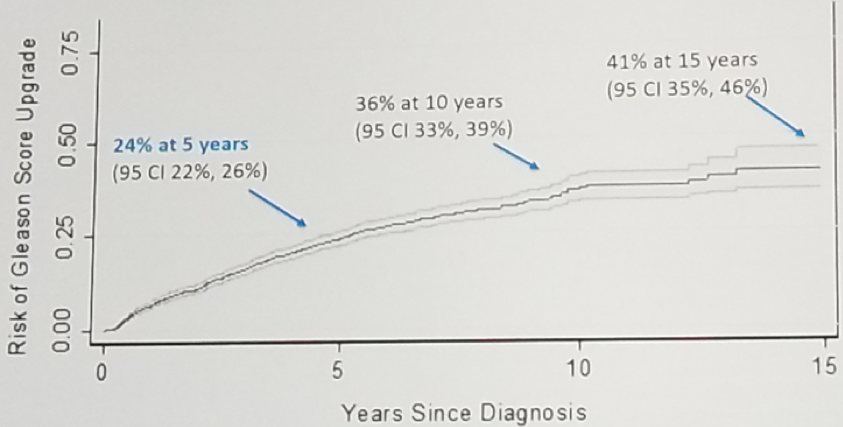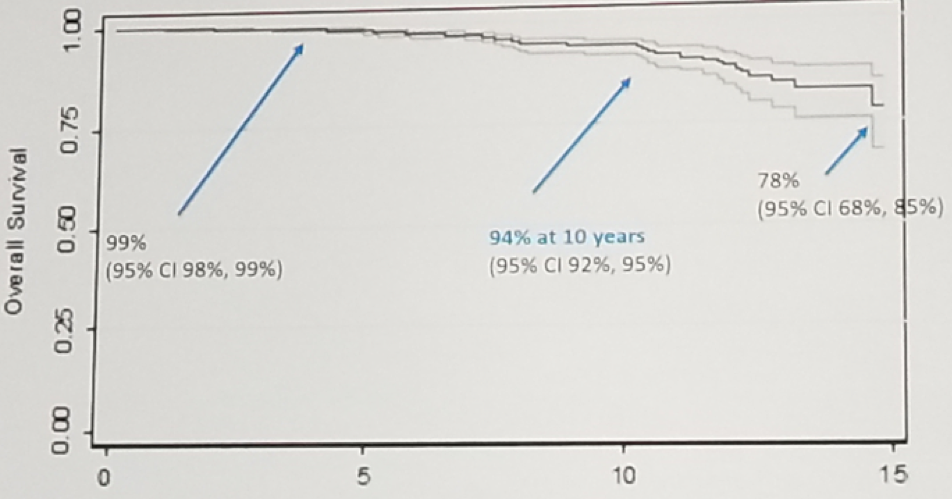Many patients on active surveillance seek to “get rid of” or “cure” cancer. However, treatment for localized prostate cancer commonly causes declines in all functional domains, and the increased use of active surveillance is essential to reduce the burden of overtreatment. What is still needed is the estimates of long-term oncologic outcomes from large-scale contemporary prospective cohorts of active surveillance.
In Memorial Sloan Kettering Cancer Center there are 2907 patients with low/intermediate risk prostate cancer who are treated with active surveillance, between 2000-2017. In this cohort, 92% of patients had Gleason 6 disease (grade group 1). The majority of patients had the non-palpable disease (89%). The active surveillance protocol at Memorial Sloan Kettering Cancer Center includes PSA and digital rectal examination every 6 months, prostate MRI every 18 months, and prostate biopsy every 36 months.
Long-term follow-up has shown that 25% of men with Gleason 6 on active surveillance were at risk of an upgrade at five years, 36% at 10 years, and 41% at 15 years, as can be seen in figure 1.

Figure 1: Long-term risk of an upgrade in men on active surveillance:
The probability for remaining on active surveillance was high for low-risk patients (78% at 5 years, 64% at 10 years, and 57% at 15 years). In total, 2/3 of the men who went on to treatment underwent radical prostatectomy. The main reason for the switch to treatment was grade progression. The incidence of metastases was very low among men with low-risk prostate cancer who were managed with active surveillance (0% at five years, 1% at 10 years, and 5% at 15 years). Out of the 2664 low-risk patients on active surveillance, one man died of prostate cancer. The overall survival of these patients was very high, with 99% at five years, 94% at 10 years, and 78% at 15 years (as can be seen in figure 2)

Figure 2- Overall survival rates at long-term follow-up after 15 years:
This long-term experience from Memorial Sloan Kettering Cancer Center confirms prior reports that active surveillance is an oncologically safe management strategy. However, it is important to keep in mind that this needs to be done in tertiary cancer centers, with appropriately selected patients, following a well-defined management strategy.
Presented by: Sigrid Carlsson, MD, Ph.D., MPH, Assistant Attending Epidemiologist, Memorial Sloan Kettering Cancer Center
Written by: Hanan Goldberg, MD, Urologic Oncology Fellow, SUO, University of Toronto, Princess Margaret Cancer Centre, @GoldbergHanan, at the 19th Annual Meeting of the Society of Urologic Oncology (SUO), November 28-30, 2018 – Phoenix, Arizona


